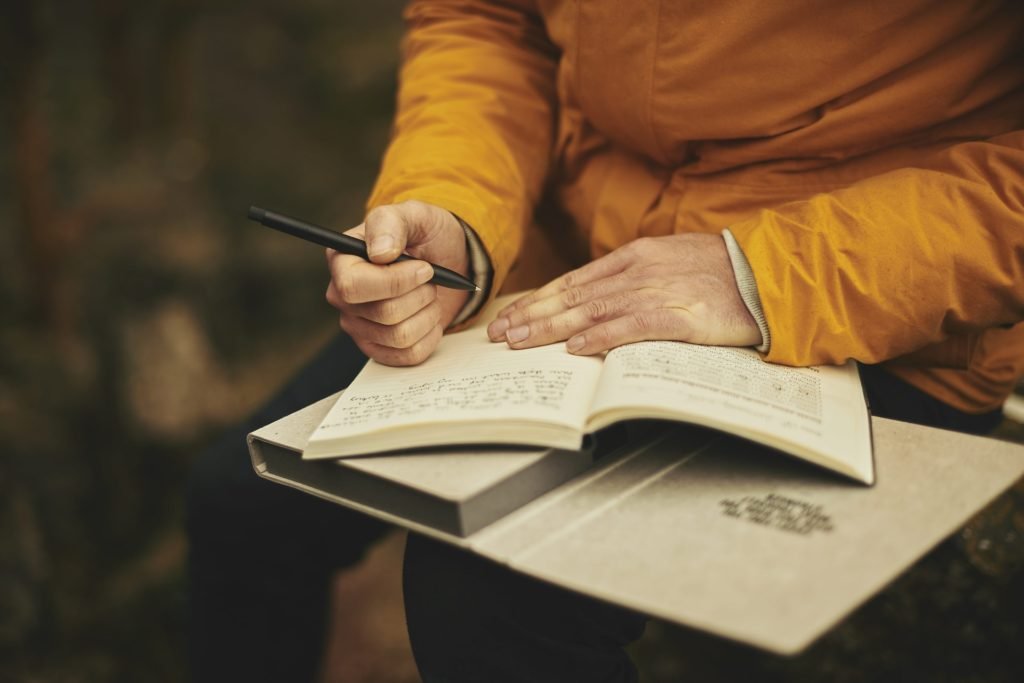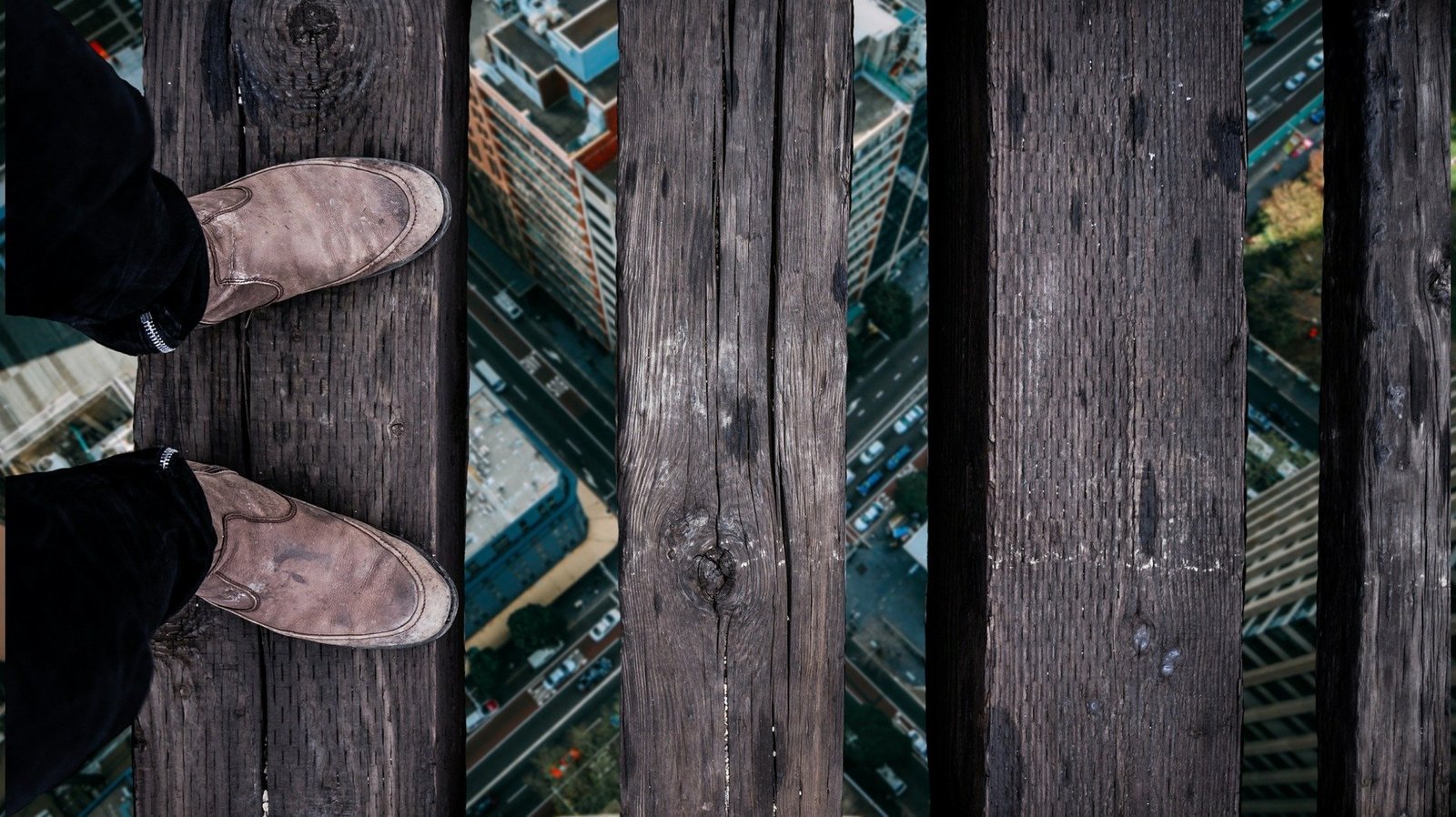
Don’t worry, I’m not going to get graphical here. Just talking fear and how our poop can be affected by it. I know many of you (at least many of you women) can relate to that uncomfortable situation where the bathroom is just too close for comfort. Maybe it’s the person in the stall next to you, or your visiting friends or family and sharing an unfamiliar bathroom, or worse yet, you’re on vacation and spending more than a few days together with your romantic partner for the first time. What do all of these scenarios have in common? They stop our digestive system. OUR DIGESTIVE SYSTEM! The system that has run automatically since the day we were born without any need for us to intervene to take the nutrients we eat, extract what is valuable and discharge the rest. It’s involuntary, meaning we don’t have to consciously activate it. How does fear have that much power? How is it that our thoughts are this powerful? Have you ever paused to think about this?
This is what is dangerous about fears. We often don’t really notice them, or we may suspect they are there but simply ignore them because that’s easier than facing them. We allow them to do their thing while we’re busy working around them. And if this is something we’ve done for a long time, we have most certainly created habits and patterns of behavior and have long forgotten how and why they got there in the first place. There are SO many types of fears out there: the fear of getting hurt, the fear of change, the fear of making a mistake, the fear of failing, the fear of not having enough money, the fear of the infamous last chance, of running out of time, the fear of the unknown, the fear of dying, the fear of the truth…
Of course sometimes fear IS vital to our existence. Wearing a seat belt, using a hot pad to take something out of the oven, not approaching a rabid dog. These are done to avoid a real injury, I would refer to them as productive fears, but it’s the other fears, the unproductive fears, the ones protecting our ego or taking us out of the present moment that I want to uncover and ensure are not affecting my life. The fear, as in the above example, that if someone hears you complete your digestion process, yes, poop, it will cause that person to judge you, think less of you, or love you less. Once we spot our fear, then we can work on the underlying basis for it, but first we must see our fear.

To be clear, if we succumb to fear, it does change our behavior. It will be the motivation behind our choices so I want to be sure that 1) I can see the fear, and 2) that it’s not an unproductive fear. Otherwise, I have limited my options, taken myself out of my own flow and stolen my freedom because I won’t choose the option that requires me to move through the fear. So what do we do if we’re concerned we have these undercover unproductive fears mysteriously calling the shots for us, stopping our digestive system so to speak? That’s a good question, and perhaps a lifelong journey, but here are some of the tools I have discovered along the way.
Setting the Intention: Opening yourself up to seeing your fears is really the first step. Because seeing our fears can make life a little uncomfortable, our mind and heart are nicely buttoned up to this information, but if you set the intention that you want to see them despite the discomfort, they will start to reveal themselves.
Journaling: Keeping a journal as you’re doing this work is a useful way of seeing your thoughts. As you’re writing about your day, your feelings, or your observations, you may start to see things that you hadn’t noticed before. Once you begin to see your thoughts, you may suddenly find yourself wondering why you make certain choices, avoid things or repeat patterns of behavior that aren’t serving you.

Art: Similar to writing, if you allow yourself to be guided by your emotions, intuition and your subconscious rather than trying to create a specific picture, you may find that information is revealed to you. You can couple your art practice with some visualization techniques described later by intentionally asking your art to reveal what it is you are afraid of.
Movement: The body holds a lot of information, and sometimes fears are actually being stored away nicely where no one can find them. A way of accessing them is moving your body in different ways than you would normally. As a teacher and practitioner of Kundalini Yoga which often requires the body to do things it’s never done before or for a longer period of time than we’re used to, I’ve experienced and observed a lot of emotions and memories release when parts of our bodies are activated in ways they haven’t been in years or ever. Sometimes we may even subconsciously avoid a particular movement in order to avoid awakening that fear.
Breath: Breathing can be another way of moving energy within and stirring up what might be hidden in your tissues. Practicing different types of pranayama, particularly rapid or deep breathing can move a lot of energy. The idea is to do something the body isn’t used to in order to access a place that hasn’t been opened in a while. If you have experienced a lot of trauma, you may want to find a good somatic practitioner to help you with this body awareness work.
Stillness: On the other end of the spectrum, finding some stillness and quiet might be the thing that best helps you see what’s going on. We live such busy lives these days, there’s great power and insight to be gained by intentionally giving yourself some time to just sit and stare at the birds or the clouds.
Mindfulness: By establishing a regular mindfulness practice, you’re much more likely to “catch yourself in the act” of fear. Watching and noticing your thoughts is very revealing, sometimes uncomfortably so, but don’t be afraid of the truth! As you move through your day, pay attention to where your thoughts go and pay particular attention to when emotions come up for you as they are often revelatory of some deep subconscious information wanting to reveal itself.
Dreamwork: When we’re able to remember them, our dreams allow us to access our subconscious which can be where those pesky fears live. There is a ton of information online about dream work. Here’s at least one useful resource. In my own experience, I will often set an intention or ask a question I have just as I am going to sleep in order to prime my consciousness. This doesn’t always work, but I like to do it to remind myself that I want to remember my dreams and to work with them. This way, I am more likely to jot them down if I wake up in the middle of the night or as soon as I wake in the morning. If you’re not someone who remembers their dreams it can take a little practice. As you’re drifting off to sleep, set that intention and see what happens. You can also try getting yourself up at a slightly different time to see if you have more memory of your dreams.
Visualizations: Consciously visualizing a scene or scenario and then allowing your conscious mind to let go of the control is how visualizations work. You can use guided imagery to go to a place where you can ask for information to be revealed. In this instance, working with a Shamanic practitioner can be helpful. You can also find guided imagery online (I just haven’t found any that specifically work to suss out fears). An example would be to imagine yourself walking through a house, take in the details, let the brain relax a bit and get into an open state, and then as you enter each room to ask to see if any of your fears are in there. The idea is to allow yourself to go deeper into your consciousness to reveal information that is hidden there.
Sound overwhelming or fun? Don’t worry, you don’t have to do all of them. Pick one and see how it goes. Switch it up if you want to. Have fun with it if you can. Remember why you’re doing it. Freedom! Once you’ve found some fears, what are you going to do with them? Stay tuned, that’s the subject of my next article…


Love it ! Thanks for sharing all this great insight and info ❤️
Thanks for reading Jesse!
Great article digging into being human and having rational and irrational fears. I love the array of tools for transformation offered. I also found the example of moving bodily memories by moving our bodies very important to aid healing.
Thank you for reading Francine!